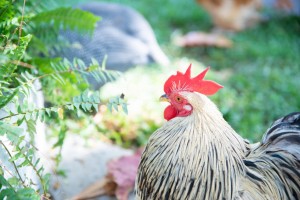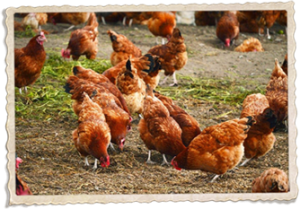The life of a backyard chicken owner means always thinking a few steps ahead. While we may still be in the midst of summer, we also have to start thinking about the upcoming season–fall. Autumn is a time for pumpkins, falling leaves, and Thanksgiving dinners. It’s also the time for chickens to start molting. Every year starting at around 18 months of age, chickens will shed their old feathers in order to grow new ones. It’s triggered by the shortening of days in the fall months, and it can last anywhere from 8 to 12 weeks.
Chicken molting is not a fun process, but it can be managed by properly preparing yourself and your flock in the months and weeks leading up to it. Here’s how:
What is Chicken Molting?
Molting is a normal and natural process for chickens. It’s when they get rid of their old feathers for new ones. Old feathers can be broken, worn out, or soiled, making them ill-suited at protecting chickens from the cold. As such, chickens will rid themselves of these feathers and grow out a new coat before winter begins.
When Do Chickens Molt?
Chickens molt every year, typically starting in the autumn months. After all, fall is when chickens prepare for winter, and one way they prepare is to get rid of their old coat and grow a new, better quality coat. Backyard chicken owners should expect the molting period to last about 8 weeks, but it can take up to 12 for some birds.
What to Do When Your Chickens Molt
While molting is a natural process, it is not a comfortable one. However, there are ways to make thing easier for your chickens and for yourself.
Adjust your feed
Feathers are rich in protein (roughly 80-85%), so when chickens molt, they can risk losing too much of those vital nutrients. As such, you need to supplement their feed to adjust for this loss. Switch to a feed that is rich in protein and cut back on the number of treats that you give your chickens during this time.
Clean the coop and run more often
While you should be keeping your coop and run clean at all times, you will likely find yourself cleaning more often while your chickens are molting. Part of this is because you’ll have to pick up any loose feathers that are lying about. However, keeping a clean environment is also more important while your chickens are molting. While your chickens’ skin is bare, they are more prone to infections, so reducing their exposure to bacteria is a must.
Check for parasites
Parasites such as mites or lice can complicate the molting process, disrupting how your chickens regrow their feathers. Continuously check for these parasites amongst your flock and treat them accordingly to ensure your chickens molt as they should.
Keep your chickens relaxed
When your chickens are molting, they can be more sensitive than usual. Try to keep them as comfortable as possible by providing them with enough space to spread out and relax. Additionally, try not to add new members to the flock during this time, as it could disrupt the pecking order and cause unnecessary stress to molting chickens.
For more information on how to care for your molting chickens, contact Chickens for Backyard today.

